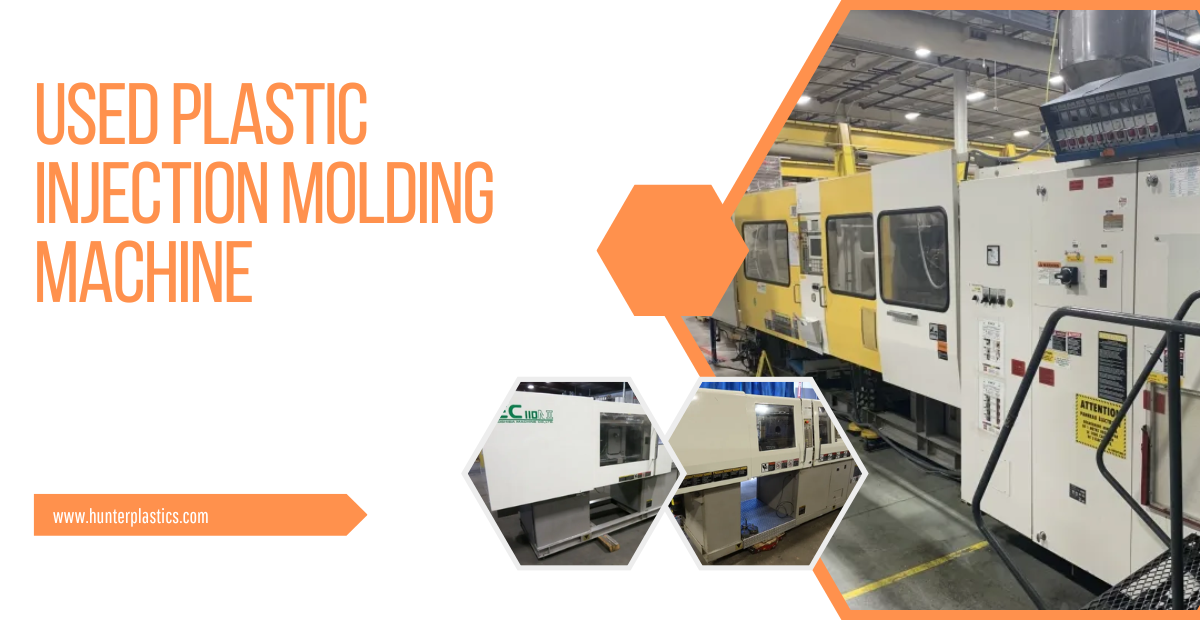Purchasing a Used Injection Molder can be a cost-effective solution for businesses looking to scale their manufacturing operations without the high expense of new equipment. However, selecting the right machine requires careful consideration to ensure it meets your production needs and doesn’t incur additional costs in repairs or downtime. This guide will help you understand the critical factors to evaluate when buying a used injection molder, ensuring you make an informed decision that delivers long-term value.
1. Assess Your Production Requirements
Before searching for a used injection molder, it’s essential to outline your manufacturing needs. Consider factors such as:
- Material types: Are you working with thermoplastics, thermosetting polymers, or specialized resins?
- Product size and complexity: Larger molds require higher clamping forces, while intricate products may need advanced precision features.
- Production volume: High-volume production demands a machine with faster cycles and high durability.
Matching the machine’s specifications with your requirements will ensure efficiency and reduce the risk of costly misalignment between the equipment and production demands.
2. Check Machine Age and Hours of Operation
One of the first aspects to investigate is the machine’s age and the total hours it has been in operation. Machines with heavy use may require more maintenance, and some components may be near the end of their lifecycle.
Look for sellers who provide maintenance logs, as these can give insight into how well the equipment was cared for. A well-maintained older machine can still perform efficiently, especially if critical parts have been replaced recently.
3. Inspect for Wear and Tear
Used injection molders consist of numerous moving parts, and natural wear is expected over time. Pay close attention to components like:
- Screws and barrels: These are subject to wear and can affect the machine’s ability to produce high-quality parts.
- Clamping unit: A worn clamping mechanism can result in improper molding and product defects.
- Hydraulic system: Check for any leaks or irregular sounds, which could indicate future breakdowns.
- Control systems: Outdated software or faulty interfaces can disrupt operations and limit efficiency.
If any issues are identified, it’s crucial to determine whether Used Injection Molder Parts for Sale are available, especially for older models. Sourcing replacement parts easily will ensure the machine can be repaired quickly if needed.
4. Determine Clamping Force and Shot Size Capacity
The clamping force and shot size are essential metrics in injection molding. Ensure the used molder offers the correct clamping force for your molds, as insufficient force can cause part defects like flash. The shot size (amount of plastic injected per cycle) should align with the volume of parts you plan to produce.
It’s a good idea to request a test run of the machine before purchasing. This allows you to verify that the machine delivers the necessary clamping force and shot size, ensuring it will meet your production needs.
5. Evaluate Automation and Integration Capabilities
Modern injection molders often come with automated features and digital controls that streamline production. While some older machines may not include these features, it’s essential to check whether they can be retrofitted with automation systems or integrated with newer technologies like:
- Robotic arms for part removal
- Internet of Things (IoT) monitoring systems for real-time data collection
- Control software upgrades to improve accuracy and efficiency
Ensuring that the used molder can adapt to modern production techniques will future-proof your investment.
6. Availability of Spare Parts and Support
One of the biggest challenges with used equipment is the potential difficulty in finding replacement parts. It’s important to verify whether the used injection molder parts for sale are still available from the manufacturer or third-party vendors. Some machines from discontinued product lines may require custom solutions, increasing repair costs.
Additionally, assess whether technical support is available for the specific model. Some manufacturers offer ongoing support for older machines, while others may have limited resources.
7. Consider the Total Cost of Ownership
The price of the used injection molder is just one part of the total cost. Other factors to include in your budget are:
- Transportation and installation costs
- Upgrades or retrofits needed to meet production standards
- Energy consumption: Older machines may not be as energy-efficient as newer models, leading to higher operating costs
- Maintenance and repair costs: Determine how much routine upkeep the machine requires and factor in potential downtime
A thorough cost analysis will help you understand whether the used equipment offers genuine savings or if hidden costs make it less appealing.
8. Seller Reputation and Warranty Options
When buying a used injection molder, the reputation of the seller is essential. Work with sellers who have good reviews and a history of dealing with industrial machinery. Request references or testimonials from previous buyers, if possible.
While warranties are less common with used equipment, some sellers offer limited warranties or service contracts for added peace of mind. A warranty can protect against unexpected breakdowns and provide coverage for essential repairs during the initial usage period.
9. Environmental Considerations
Sustainability is becoming a significant factor in manufacturing. If environmental impact is a priority, look for a used injection molder that supports sustainable practices, such as:
- Energy-efficient models to reduce power consumption
- Low-waste production cycles that minimize scrap
- Compatibility with recycled materials
Purchasing a second-hand machine itself is an eco-friendly choice, as it extends the lifecycle of industrial equipment, reducing the environmental impact of manufacturing new machinery.
Conclusion
Buying a used injection molder can be a strategic decision that provides significant savings and meets production goals—if done carefully. By evaluating factors like machine age, part availability, clamping force, and total cost of ownership, you can select a reliable machine that aligns with your business needs. Always ensure that Used Injection Molder Parts for Sale are available to avoid disruptions in the future.
With the right due diligence, purchasing a used injection molder can be a valuable investment that boosts your production capacity without breaking your budget.
